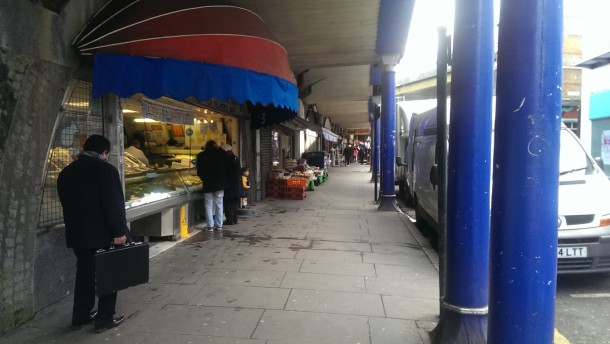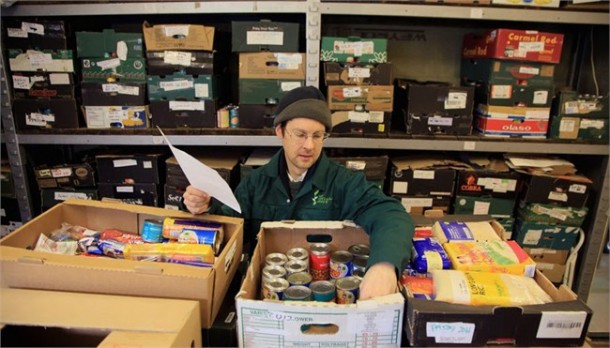
Living an ethically blemish-free life is near impossible in the world as it is. But we should be careful to distinguish between processes we don’t like and the people caught up in them. We may hate the way gentrification rips apart long-standing communities, but should feel differently about those involved in the process.
This doesn’t mean that the actions of gentrifiers are immune from criticism. Gentrifiers can’t be blamed simply for being involved in the process; that would be like saying many people should never move from their place of origin (whatever that means). But there are ways to be a more or less ethical gentrifier. I’ve come up with four:
1. Remember: there was something here before you arrived.
One of the features of gentrification is the sense it transforms once vibrant and diverse areas into sanitised, homogenous versions of their former selves. Sometimes this is expressed as ‘social cleansing’ which seems to me inappropriate, or is quaintly expressed as loss of ‘character’ or ‘colour’. The point is that gentrification involves making socially or ethnically diverse areas whiter, more generic and more middle class.
Those engaged in the process should educate themselves about what the area was like before they arrived. This is simple manners. Just as it would be rude to travel to a different country without any knowledge or interest in its culture or history, so the same is true of moving to a new area. Curiosity about a place’s past is also a good tactic when it comes to getting to know locals, who may be wary of your presence.
2. Befriend long-standing residents.
People fear change, but change is constant. The question is do those affected feel they have a stake?
Many people affected by gentrification do not engage with the process, not least because it forces many to move. Long-standing residents who remain are witnessing a place they have known transform before their eyes. This can be a disorientating experience.
One way to deal with this is to have conversations and build relationships. This is a two-way street: long-standing residents should reach out to newcomers as well as the other way around. But given the disruption and dislocation gentrification brings, the onus is on the ethical gentrifier.

3. Support the local economy.
We are regularly told that we should reject big chain stores and shop at independent retailers. Often this is just a way for middle-class people to elevate their expensive tastes on a platform of moral superiority. A big Tesco has co-existed alongside a traditional market in Brixton for many years. Both serve the needs of local people efficiently and affordably, while allowing the community to express its character.
The question is not whether an enterprise is ‘independent’ (from whom?) but whether it plays a positive role in the local economy and community. What we want are businesses that recognise and fulfil their duty to enrich the communities they serve, by training and employing local people, or actively championing local culture and innovation. The recent Pop Brixton initiative is a good example, despite its trendy exterior. Ethical gentrifiers should support businesses that support the local economy and community, not those that simply leech off it.

4. Volunteer.
Volunteering is good for everyone involved. It benefits the direct recipient – the vulnerable child mentored, the homeless person fed – but also the volunteer themselves, who gain in skills and confidence, or improved health and well-being.
It also helps people to build a stake in their local community. This is important where there’s erosion of the shared history and experience that binds local people to each other and their area. Volunteering enables ethical gentrifiers to help individuals, help themselves, and help rebuild the communities that gentrification often erodes. What’s not to like?
This is the advice gentrifiers should follow if they want to be ethical. I’ll end with a tip for governments concerned with the social impact of gentrification as a process: build more bloody homes, and make them affordable while you’re at it.




Pretty sure that’s not a photo of a volunteer at Brixton Foodbank unless it’s old.
A beautifully written piece with good advice and all about valuing the community not just the housing stock.
I would ask you tho to think about Brixton relative to all of its history not just post 1948.
Brixton (and Peckham) pop up in all sorts of novels, Jane Austen being just one such author, it was a coaching stop for the well off and for carters bringing goods into London from the south.
Victorian Brixton was very posh – look at the Booth “poverty maps” – these show highly affluent classes along all of the main routes, this explains why we have such wonderful housing stock, the very large properties and also perhaps why those with money are seeking to move in now. Consider the appearance of Brixton in Sherlock Holmes’ mysteries – home goose breeders as well as the well heeled. Very early department stores with their wonderful shop fronts arrived and the high street became a shopping destination.
After the Victorians then came the stage folk – Marilyn Monroe’s character in the Prince and the Showgirl lives in Brixton. With the introduction of trams and public transport it became the obvious place for west end shop workers and stage folk to live. The area became cheaper as heavy traffic made the posh houses less desirable to those with money.
My Croydon-based colleague (aged 62) remembers his Fulham born Mum going “up Brixton” for a smart day out and to do special shopping. The shops remained and so did the all important labour exchange which was where a lot of Brixton’s more recent cultural history started.
Notting Hill and Chelsea were full of run down bedsits and boarding houses in the 1940s and 1950s when few people had the money needed to repair war damage and maintain their property. All things are cyclical, what goes ‘down’ will come ‘up’ again and vice versa Brixton is just experiencing one of those changes.
Change isn’t always bad as you say so long as it is done thoughtfully and intelligently. I can’t wait for the Victorian building opposite TK Maxx to be brought back to life for example, I watch those changes with interest. With these developments also come jobs and opportunities and I can’t regret that, I just hope that these new businesses can co-exist with the more colourful ones that have been here for years.
I regret the loss of the Georgian mansions and some of the early history of Brixton, these would have been very beautiful to be around but instead I recognise the importance of having the additional homes to many that now stand on those plots that once housed a single family. Brixton didn’t spring into life in 1948, but a lot of what it is now did start there. It is an absolute privilege to live in such a wonderful place, I’ve never had such fun living anywhere else in London over the last 20 years.
Beautifully written. Well done Temi Ogunye.
What a clear minded, sensible piece.